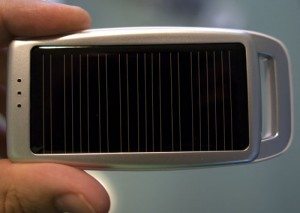 With the proliferation of electronic gadgets it gets difficult to keep your tools charged. Most electronic devices have moved to a standard USB port for charging. This is a welcome change. Now I can use my AC USB port at home, the USB port in my laptop at work, my USB car adapter on the road, and finally, my USB portable charger anywhere.
With the proliferation of electronic gadgets it gets difficult to keep your tools charged. Most electronic devices have moved to a standard USB port for charging. This is a welcome change. Now I can use my AC USB port at home, the USB port in my laptop at work, my USB car adapter on the road, and finally, my USB portable charger anywhere.
The Arctic C1 is cleverly designed to enable me to recharge any device with a USB adapter (or one of the included adapters) with what is essentially, a spare battery. The twist with this device is the inclusion of a solar cell. I can recharge this battery using the sun (or indoor light) as well as the more conventional USB port.
What’s in the Clamshell
First off, it comes in a plastic clamshell. So things did not start off well. I am not a fan of this packaging, it is an unfortunate choice. I wish I could wrestle this gadget from Julie.
Once you manage to free the charger from its plastic tomb you discover a number of items:
- Charger
- Manual
- Cable with multiple tips
Here is a look at the back of the charger:
The specs for the Charger:
- 4.3″ by 1.7″ by .47″
- 4440 mWh Li-ion battery
- 5.5 V, 80 mA Solar Panel
- 5.5 V, 300 mA USB input
- 5.5 V, 500 mA USB output
The cable includes adapters for:
- Nokia
- Sony Ericsson
- Samsung
- Mini-USB
However, if you have a USB charging cable for your device, you do not need the included cable or tips.
Charging the Charger
Before you can use the charger, it needs to be charged. There are two ways to charge it. You can let the solar panel charge it, or plug it into a 5V USB power source. The solar option is nice, but can take awhile. To charge it using USB you plug the power source (for example, your computer’s USB port) into the Mini USB port of the charger.
The Mini-USB port on the left is used to charge the charger, the regular USB port on the right is used to plug in the device you want charged. A very simple, and straightforward approach.
The C1 has 3 unlabeled LEDs on the front. These indicate if the battery is charging.
The LEDs are the three dots in the above picture. The manual labels them A, B, and C. In this picture, A is the top LED, and C is the bottom.
When the battery is charging via the Solar Panel, LED C lights up. When you are connected via USB to charge, LED A lights up. So, if you are not sure there is enough light, you can check the third LED. If it is not lit, you either have insufficient light, or the battery is full. I found charging via USB to be a better option. Simply plug it in, and when the first light goes out, your battery is full.
Charging Your Device
The included cables and tips cover a wide variety of devices. Fortunately, most of the devices I use today charge via USB, therefore I just use one for the cables I already have. Plug the cable into the regular USB port (it is clearly marked as OUT on the back of the charger) and attach your device. Now the three LEDs indicate how much charge the Charger’s battery has:
- 1 LED 10-30%
- 2 LEDs 30-70%
- 3 LEDs 70-100%
I have used this to successfully charge multiple Android phones, an iPod Touch and an iPod Nano. I have had no issue with it, and it is quite handy. Besides packaging, my only complaint is the battery size. I would definitely be interested in a version with a larger battery. Even fully charged, it will not fully recharge my Droid X, but it is a great way to keep my phone going in a pinch. This has earned a permanent spot in my laptop case.
INIU Portable Charger, Smallest 22.5W 10000mAh Power Bank, USB C in/Output Fast Charging 3-Output Mini Battery Pack Charger with Phone Holder for iPhone 17 16 15 14 Air Samsung S23 Google iPad Tablet
26% OffMulti USB Charging Adapter Cable Kit, USB C to Ligh-ting Adapter Box, Conversion Set USB A Type C Lightn-ing Micro Adapter Kit,60W Charging and Data Transfer Cable Kit Sim Tray Eject Tool Slots
8% OffProduct Information
| Price: | 24.99 |
| Manufacturer: | Arctic |
| Requirements: |
|
| Pros: |
|
| Cons: |
|

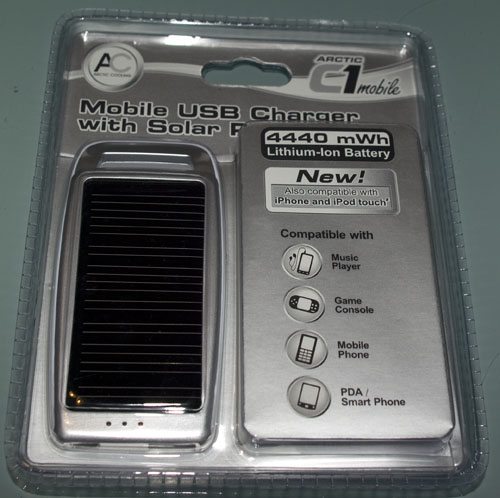
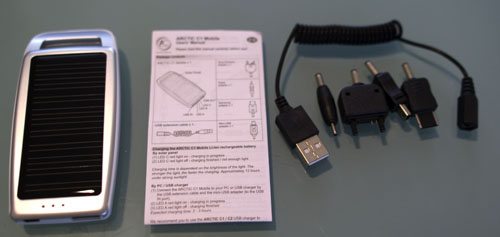
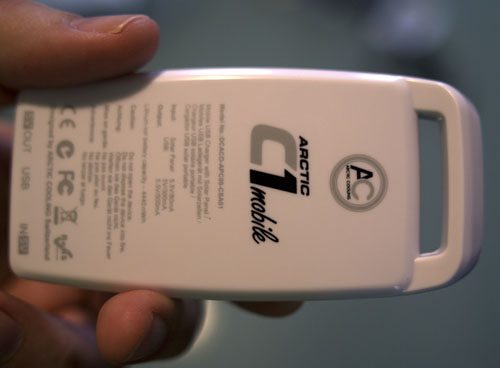
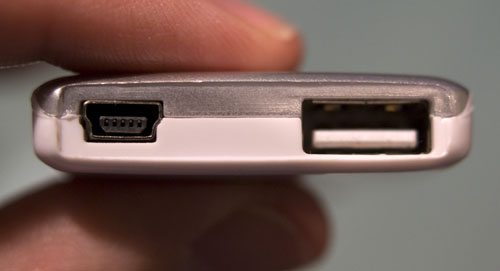
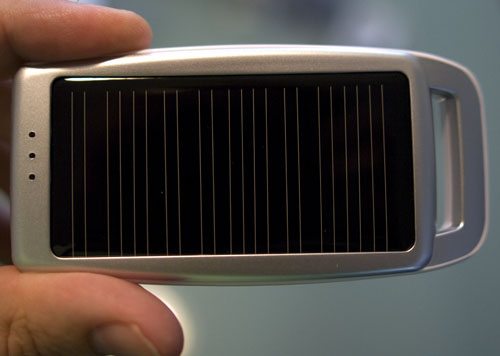
![[From INIU - the SAFE Fast Chage Pro] Experience the safest charging with over 38 million global users. At INIU, we use only the highest-grade materials, so we do have the confidence to provide an industry-leading 3-Year iNiu Care. [22.5W Speedy Char...](https://m.media-amazon.com/images/I/416nS4GRFtL._SL160_.jpg)

Gadgeteer Comment Policy - Please read before commenting
http://www.dealextreme.com – billions of such devices at cheapest prices
@dmitriy
Any experience with chargers from dealextreme?
I’m afraid a bad fit could damage my iPhone slot in the end.
Nevertheless I’m still waiting for a solar panel that generates enough juice to keep my iPhone fully charged during hikes and cycling while I’d be using the iPhone GPS and navigation functions.
I would look forward to such a review.
🙂
Ronald:
The problem with a solar panel and your requested use would be that when hiking/biking, you are constantly moving. While a 15 or 20 watt “flexible/roll up” solar panel would work for you (easy to pack/carry), you would be ‘on the move’ during daylight hours. Unless you find a way to carry a 200 + watt solar panel with a rapid charge cell phone and don’t mind sitting down for an hour or 3 during your hike, I don’t think there’s an answer for you.
For CAMPING (even backpacking, if you plan on staying in one location for more than 24 hours), something like this would be perfect:
http://www.amazon.com/PowerFilm-R15-600-15-4V-600mA-Rollable/dp/B0007WOJDU/ref=sr_1_5?ie=UTF8&s=hi&qid=1297365320&sr=8-5
@dmitriy
Yeah, but for the price and battery size, this one is more than competitive.
@Ronald
Yeah, for the size and output of that panel, it doesn’t quite fit your needs, but you could hang it on the backpack to charge up while hiking. Not going to keep up with the phone’s drain, but can help give you some more time.
@jhon
That looks really cool. Then I looked at the price. Still, very cool.
@Bryan:
The battery isn’t as big as you think….
The first thing I noticed about the photo of the C1 in its clamshell is the deception about capacity — 4440 mWh is 1200 mAh at 3.7 volts. That’s less than many standard phone batteries (e.g. Nokia BP-4L and BP-5 are both 1500 mAh at 3.7 volts).
@Ralf, thanks for the info, i wondered why it would run outta juice so fast.
@Ronald , I think the solution for the price is basically pick up like 4 or 5 of them and for 100 bucks and very little space, you have at least 3 full charges for an android/iphone plus the others can charge up while the active charging one is doing its job. If you are camping or hiking 4 or 5 hanging on your backpack shouldn’t cause you too much trouble. They are about the size of an iphone and dont weigh much. Plus they have a hook hole on them so you can tie them onto stuff.
In addition to the slightly misleading use of mWh instead of mAh (which makes me suspect that some of the reviewers out there haven’t actually tested the C1 – they reckon they got several full charges out of it), I’ve discovered (and had confirmed by Arctic) that if you run it completely flat it won’t charge up from its solar panel unless you plug it into a 5V power source for a second or so first to kick-start it. So if you take it hiking, chances are you’re only going to get one charge out of it unless you’re very diligent about not letting it go completely flat. So it’s a bit useless, actually.
DJ